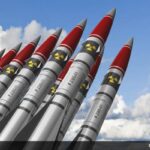With as many as 120 warheads, Pakistan could in a decade become the world’s third-ranked nuclear power, behind the United States and Russia, but ahead of China, France and Britain. Its arsenal is growing faster than any other country’s, and it has become even more lethal in recent years with the addition of small tactical nuclear weapons that can hit India and longer-range nuclear missiles that can reach farther.
These are unsettling truths. The fact that Pakistan is also home to a slew of extremist groups, some of which are backed by a paranoid security establishment obsessed with India, only adds to the dangers it presents for South Asia and, indeed, the entire world.
Persuading Pakistan to rein in its nuclear weapons program should be an international priority. The major world powers spent two years negotiating an agreement to restrain the nuclear ambitions of Iran, which doesn’t have a single nuclear weapon. Yet there has been no comparable investment of effort in Pakistan, which, along with India, has so far refused to consider any limits at all.
The Obama administration has begun to address this complicated issue with greater urgency and imagination, even though the odds of success seem small. The meeting at the White House on Oct. 22 between President Barack Obama and Prime Minister Nawaz Sharif of Pakistan appears to have gone nowhere. Yet it would be wrong not to keep trying, especially at a time of heightened tensions between Pakistan and India over Kashmir and terrorism.
What’s new about the administration’s approach is that instead of treating the situation as essentially hopeless, it is casting about for the elements of a possible deal in which each side would get something it wants. For the West, that means restraint by Pakistan and greater compliance with international rules for halting the spread of nuclear technology. For Pakistan, that means some acceptance in the family of nuclear powers and access to technology.
At the moment, Pakistan is a pariah in the nuclear sphere to all but China; it has been punished internationally ever since it followed India’s example and tested a weapon in 1998. Pakistan has done itself no favors by refusing to join the Nuclear Nonproliferation Treaty and by giving nuclear know-how to bad actors like North Korea. Yet, it is seeking treatment equal to that given to India by the West.
For decades, India was also penalized for developing nuclear weapons. But attitudes shifted in 2008 when the United States, seeking better relations with one of the world’s fastest-growing economies as a counterweight to China, gave India a pass and signed a generous nuclear cooperation deal that allowed New Delhi to buy U.S. nuclear energy technology.
U.S. officials say they are not offering Pakistan an India-like deal, which would face stiff opposition in Congress, but are discussing what Pakistan needs to do to justify U.S. support for its membership in the 48-nation Nuclear Supplier Group, which governs trade in nuclear fuel and technology.
As a first step, one U.S. official said, Pakistan would have to stop pursuing tactical nuclear weapons, which are more likely to be used in a conflict with India and could more easily fall into the hands of terrorists, and halt development of long-range missiles. Pakistan should also sign the treaty banning nuclear weapons tests.
Such moves would undoubtedly be in Pakistan’s long-term interest. It cannot provide adequate services for its citizens because it spends about 25 percent of its budget on defense. Pakistan’s army, whose chief of staff is due to visit Washington this month, says it needs still more nuclear weapons to counter India’s conventional arsenal.
The competition with India, which is adding to its own nuclear arsenal, is a losing game, and countries like China, a Pakistan ally, should be pushing Pakistan to accept that. Meanwhile, Narendra Modi, India’s prime minister, has done nothing to engage Islamabad on security issues, and he also bears responsibility for current tensions. The nuclear arms race in South Asia, which is growing more intense, demands far greater international attention.
